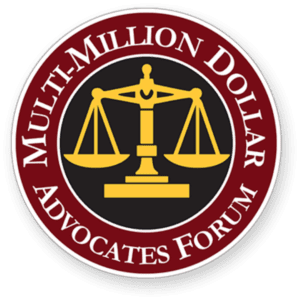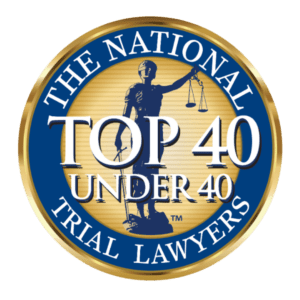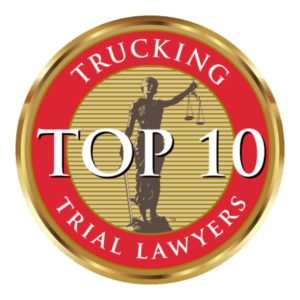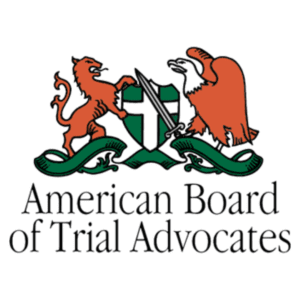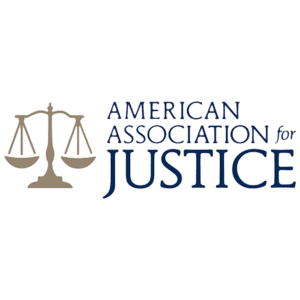
Understanding Chameleon Carriers
Motor carriers known as “chameleon carriers” cease their operations and resume them with a fresh legal identity, circumventing regulatory penalties and civil liability for negligence and injuries caused by their operations.
These entities deliberately create corporate structures to shield assets and evade responsibility, presenting unique challenges for plaintiffs’ attorneys seeking justice for injured clients.
Validating carrier information is crucial, particularly focusing on using accurate addresses to identify legitimate carriers and prevent fraud.
Chameleon carriers may falsify their addresses to avoid accountability for past violations, making it essential for stakeholders to scrutinize carriers’ addresses and contact details to ensure safety and compliance.
Chameleon carriers employ several predictable strategies to evade liability, including establishing shell companies with minimal assets, transferring equipment to newly formed entities, maintaining identical operational control while creating paper distinctions, and strategically filing for bankruptcy protection when faced with significant claims.
Elevated Risk Profile
The statistical evidence against chameleon carriers provides compelling support for legal claims.
Research from the GAO demonstrates that these carriers have nearly three times the crash rate of compliant carriers.
According to the Federal Motor Carrier Safety Administration (FMCSA), “chameleon carriers are almost three times more likely to be involved in serious crashes compared to a trucking company operating by the book.”
A past review determined that chameleon carriers were responsible for accidents that killed 217 people and injured 3,500 over a five-year period.
This data is robust evidence in establishing the foreseeability element in negligence claims, particularly when pursuing theories of negligent entrustment, hiring, or supervision against entities that contract with identifiable chameleon carriers.
Identifying Chameleon Carriers
Carriers known as chameleon carriers are skilled in concealing their true identities, which makes it essential to identify specific characteristics.
Notable features of such carriers include operating unmarked trucks, offering false or incomplete information, and demonstrating a lack of professionalism and inadequate safety protocols.
One of the challenges in identifying these deceitful practices is recognizing their chameleon attributes.
These attributes make it difficult to spot rebranded trucking companies that attempt to evade scrutiny, raising significant concerns for industry safety due to the increased likelihood of accidents and safety violations.
Recognizing these indicators assists logistics companies in ascertaining a carrier’s authenticity and safeguarding their operations.
Unbranded Trucks
Carriers known as chameleons typically operate trucks that lack distinctive branding, which helps them remain under the radar and swiftly alter their appearance when necessary.
Strategically employing these anonymous vehicles serves as a key method for concealing their activities by blending into the surroundings undetected while engaging in unlawful actions.
This approach enables them to slip past regulatory oversight easily, but it also presents challenges for those attempting to track and pinpoint such elusive entities.
For shippers and others involved in the trucking sector, being aware of unmarked trucks can serve as an initial measure to safeguard their supply chains from heightened risks and disruptions related to reliability.
Inaccurate or Missing Information
In the trucking industry, chameleon carriers frequently use misleading or false contact information to escape detection and oversight from regulators.
These entities may employ various strategies, including virtual addresses or temporary phone numbers, to create ambiguity and complicate authorities’ efforts to locate them.
Chameleon carriers may falsify their addresses to avoid accountability for past violations, making it crucial for stakeholders to scrutinize carriers’ addresses and contact details to ensure safety and compliance.
Carrier details must be confirmed through official websites and reliable sources to ensure legitimacy and uphold safety standards within the industry.
Addressing these matters swiftly is vital for preserving the integrity of industry practices.
Ensuring that accurate contact information is available is critical in fostering accountability and openness in operations.
Regrettably, only about 2% of new applicants for Department of Transportation (DOT) credentials are scrutinized to determine if they are masquerading as chameleon carriers.
This negligible verification rate underscores the need to examine supplementary information and evidence when evaluating prospective carriers carefully.
Poor Professionalism and Security Measures
Chameleon carriers frequently display unprofessional tendencies, including sporadic communication and habitual tardiness.
When drivers show signs of being unresponsive, it can serve as a crucial warning sign for these carriers, pointing towards potential safety issues.
Inadequate measures, such as insufficient driver vetting processes and lax record management, indicate subpar operational practices among these carrier entities.
To safeguard fleets from such risks, businesses must remain alert and spot telltale signs while enforcing robust security protocols.
The FMCSA is taking steps to improve its screening process and more effectively recognize chameleon carriers when they apply for DOT numbers.
Observing indicators like delays and poor communication skills could hint that a driver might be working under a chameleon carrier’s umbrella.
Building a Strong Legal Case
Corporate Veil Piercing Strategies
Successfully litigating against chameleon carriers often requires piercing the corporate veil to reach the true decision-makers and assets behind these operations.
Courts have increasingly recognized the need to look beyond formal corporate structures in the transportation sector.
Several federal circuits have recognized expanded doctrines of successor liability for federal claims.
These courts have found that federal common law successor liability does not require commonality of ownership between a predecessor and successor company.
Documentation and Discovery Tactics
Effective discovery is critical in chameleon carrier cases. Key document requests should include:
Corporate formation documents for both original and successor entities
Equipment transfer records and bills of sale
Driver employment records across entities
Insurance applications and underwriting files
Safety audit records and compliance reviews
Bank records showing fund transfers between entities
Communications regarding entity formation and operations
The timing of discovery is critical, as defendants may transfer assets throughout litigation. Early injunctive relief to freeze assets may be warranted in cases with evidence of ongoing asset transfers.
Establishing Successor Liability
The doctrine of successor liability provides another avenue for holding chameleon carriers accountable.
While traditionally limited in application, courts have increasingly applied expanded successor liability theories in cases involving transportation companies with histories of safety violations.
Four circumstances where successor liability typically applies in chameleon carrier cases include:
Express or implied assumption of liabilities
De facto merger between entities
Mere continuation of the enterprise under a different name
Transactions designed to escape liability fraudulently
Evidence of continuity in operations, customers, facilities, and personnel proves particularly persuasive to courts when pursuing successor liability claims.
Impact on the Trucking Industry
The existence of chameleon carriers in the trucking industry poses a significant threat, as they erode trust and inject instability among those involved.
These entities intensify the competitive landscape for bona fide carriers that comply with safety regulations and standards.
The sector’s consequences are widespread, encompassing monetary damages, tarnished reputations, and disruptions to supply chains.
Trucking Companies and Drivers
Chameleon carriers pose a risk to the credibility of upstanding trucking companies, resulting in potential loss of business and diminished trust within the industry.
The existence of these carriers often leads to a more severe examination of genuine drivers, undermining their job stability and contributing to an impression that safety standards are declining.
A new identity does not equate to improved safety or operational standards, as the same underlying issues often persist, contributing to a higher risk of accidents.
Unprofessional conduct by drivers, including delays and poor communication, can damage the reputation of a trucking company.
Genuine truck drivers may encounter increased suspicion and possible unemployment because chameleon carriers negatively affect the industry’s standing.
Telltale signs of such unreliable operations include late arrivals by drivers and inadequate or nonexistent communication regarding queries.
These problems can jeopardize legitimate drivers’ employment security.
Shippers
When shippers collaborate with chameleon carriers, they expose themselves to considerable hazards, such as product theft and damage.
Chameleon carriers operating illegally transfer significant risks to shippers, including theft and product damage.
The opaque nature and non-compliance of these dubious carriers foster a situation in which shippers can be misled into trusting them.
Shippers may suffer from stolen merchandise, damaged goods, monetary setbacks, and potentially expensive legal disputes.
The association with chameleon carriers can sully a shipper’s reputation in business, diminishing their credibility among customers.
Such erosion of confidence can yield enduring adverse effects on their capacity to attract new clients and preserve ongoing partnerships within the service sector.
Consumers
Consumers are at risk of acquiring stolen merchandise from chameleon carriers, potentially facing safety hazards and monetary setbacks.
These dubious carriers frequently distribute fake or deteriorated goods, causing delivery delays or complete failure.
Unknowingly engaging in transactions with stolen items exposes consumers to the dangers associated with defective products.
Engaging in business with chameleon carriers may lead to considerable wait times for product arrival, or worse, non-receipt of purchased items, leading to consumer dissatisfaction and economic detriment.
The threat is amplified by the chance of obtaining damaged or hazardous products, underscoring the critical importance of caution within the supply chain process.
Case Study: Jaypur Logistics
The May 7, 2022 shutdown of Jaypur Logistics by the FMCSA provides an instructive case study for attorneys.
After accumulating multiple safety violations, Jaypur attempted to continue operations as JPL Logistics LLC while maintaining the same equipment and personnel.
The FMCSA declared Jaypur Logistics an “imminent hazard” to public safety after finding the carrier “egregiously noncompliant with multiple federal safety regulations.”
Shortly after the shutdown, the FMCSA discovered that Jaypur’s owner was continuing operations under a different carrier number as JPL Logistics LLC.
This enforcement action presents several litigation opportunities:
The FMCSA findings serve as potential collateral estoppel on safety violation issues
The agency’s determination of common control provides robust evidence for piercing the corporate veil
The continuation of operations despite the shutdown order may support punitive damages claims
The documented pattern of violations establishes notice of risks
The measures taken against Jaypur Logistics by the FMCSA reflect their success in regulatory enforcement actions and the ongoing obstacles involved in such efforts.
Despite these regulatory pursuits, completely eradicating chameleon carriers is complicated due to challenges associated with tracking changes in ownership and nuances in operational logistics.
Leveraging FMCSA Investigations
FMCSA investigations can provide critical evidence for civil litigation against chameleon carriers.
Under the Freedom of Information Act, attorneys can obtain investigation reports, compliance reviews, and enforcement actions that may identify relationships between supposedly separate entities.
The FMCSA initiated a vetting program following a tragic charter bus accident.
This program identifies and prevents chameleon carriers from acquiring operating authority.
It uses automated risk-based assessments to scrutinize new applicants and assess whether they exhibit behaviors typical of reincarnated carriers, ensuring safety and compliance in the transportation industry.
The agency has developed software to conduct “automated risk-based assessments calculating risk potential based on the likelihood that an applicant for commercial operating authority is a chameleon carrier.”
Results from these investigations can serve as powerful evidence in establishing knowledge and patterns of conduct.
State Regulatory Coordination
Many state transportation departments maintain their enforcement divisions that may hold valuable information about chameleon carrier operations.
Coordination with state authorities can yield substantial evidence in states with aggressive enforcement programs, such as Texas, California, and Illinois.
The Texas Department of Public Safety recently obtained legislative authority to “revoke or deny a motor carrier’s request for registration if its owner was either owned, operated, managed, or controlled by a person that the Texas Department of Public Safety had determined has an unsatisfactory rating under federal rules.”
Legal Developments
Texas HB 3254: A Model for Enhanced Enforcement
Texas House Bill 3254, passed in 2017, represents a significant advancement in the legal framework addressing chameleon carriers.
The legislation empowers state agencies to deny registration to entities connected to individuals who have received unsatisfactory safety ratings from the Texas Department of Public Safety.
Additionally, the FMCSA has implemented a dedicated process to identify and prevent chameleon carriers from acquiring operating authority.
This process includes a vetting program utilizing advanced automated risk assessment software.
This ensures that new applicants and those returning to the industry are thoroughly screened to track potential reincarnated carriers.
The bill clarified the Texas DMV’s authority to deny motor carrier registration if the applicant was owned, operated, managed, or controlled by a person that the Texas Department of Public Safety had determined had an unsatisfactory rating under federal rules.
Representing Accident Victims
Damage Recovery Strategies
Recovering damages from chameleon carriers presents unique challenges due to their deliberate asset-protection strategies. Successful attorneys employ multi-faceted approaches, including:
Pursuing all potential insurance coverage, including excess and umbrella policies
Identifying and attaching assets before they can be transferred
Adding brokers, shippers, and logistics companies as defendants under theories of negligent selection
Pursuing personal liability against owners and operators who participate in fraudulent transfers
Technology as an Evidentiary Tool in Litigation
Blockchain Transaction Analysis
Emerging blockchain technologies are creating new methods to track ownership and transfers in the transportation industry.
These technologies create immutable records that can help establish connections between supposedly separate entities.
Blockchain technology offers “improved visibility into the supply chain, allowing products, components, or raw materials to leave a digital trail from origin to destination.”
This immutability can provide powerful evidence in establishing the continuity of operations between predecessor and successor chameleon carriers.
Data Mining and Pattern Recognition
Advanced data analytics can reveal patterns in operations, equipment use, and driver assignments that help establish the true relationship between supposedly separate entities.
Courts have increasingly accepted evidence derived from systematic analysis of electronic logging device (ELD) data, GPS records, and dispatch systems.
GAO found that the increasing number of freight carrier applicants exhibiting chameleon attributes poses significant risks to road safety, with these carriers being more likely to be involved in serious accidents.
This technological evidence is particularly valuable in establishing the “mere continuation” element of successor liability claims.
Summary: A Strategic Approach
Successfully litigating against chameleon carriers requires a comprehensive strategy that includes:
Early identification of potential successor entities and relationships
Aggressive discovery focused on corporate structures and asset transfers
Coordination with federal and state regulatory authorities
Strategic use of injunctive relief to prevent ongoing asset dissipation
Development of evidence supporting veil-piercing and successor liability
Consideration of all potential defendants in the transportation chain
By diligently applying these strategies, attorneys can overcome the deliberate barriers established by chameleon carriers and secure just compensation for injured clients.
Contact Sam Aguiar Injury Lawyers Today
Don’t let these complex corporate structures deny you all the compensation you are owed.
Our trucking lawyers are ready to fight for your rights.
Contact us now at 502-888-8888
Frequently Asked Questions
How can attorneys prove the connection between a previous entity and a chameleon carrier?
Establishing connections typically requires analysis of corporate formation documents, equipment transfers, overlapping personnel, and operational continuity.
Key evidence includes bills of sale for equipment, driver qualification files showing continuous employment, and corporate documents revealing common ownership or control.
Deposition testimony from safety directors who worked across entities can be particularly valuable.
What damages are typically recoverable in chameleon carrier cases?
In addition to standard compensatory damages, many jurisdictions permit enhanced or punitive damages when evidence demonstrates deliberate disregard of safety regulations.
Some courts have also permitted recovery of attorneys’ fees under theories of fraud or statutory violations.
Prejudgment interest may be available from the original entity’s dissolution date.
How do statute of limitations concerns affect chameleon carrier cases?
Discovery rules often permit extending the statute of limitations when defendants have concealed their true identity or corporate relationships.
Federal courts applying the doctrine of successor liability may toll the statute of limitations until the plaintiff reasonably could have discovered the relationship between predecessor and successor entities.
What expert testimony is most effective in chameleon carrier litigation?
Transportation safety experts with specific experience in carrier auditing and compliance prove most effective in these cases.
Experts who can analyze patterns across entities and articulate how these patterns demonstrate evasion of safety regulations provide particularly persuasive testimony.
Financial experts who can trace asset transfers also strengthen these cases substantially.



